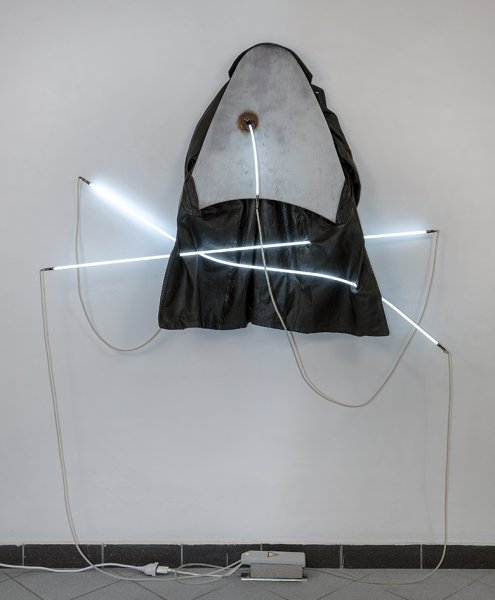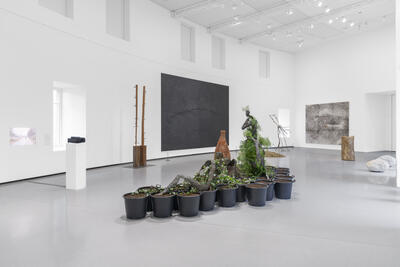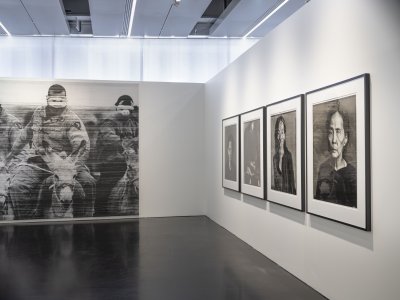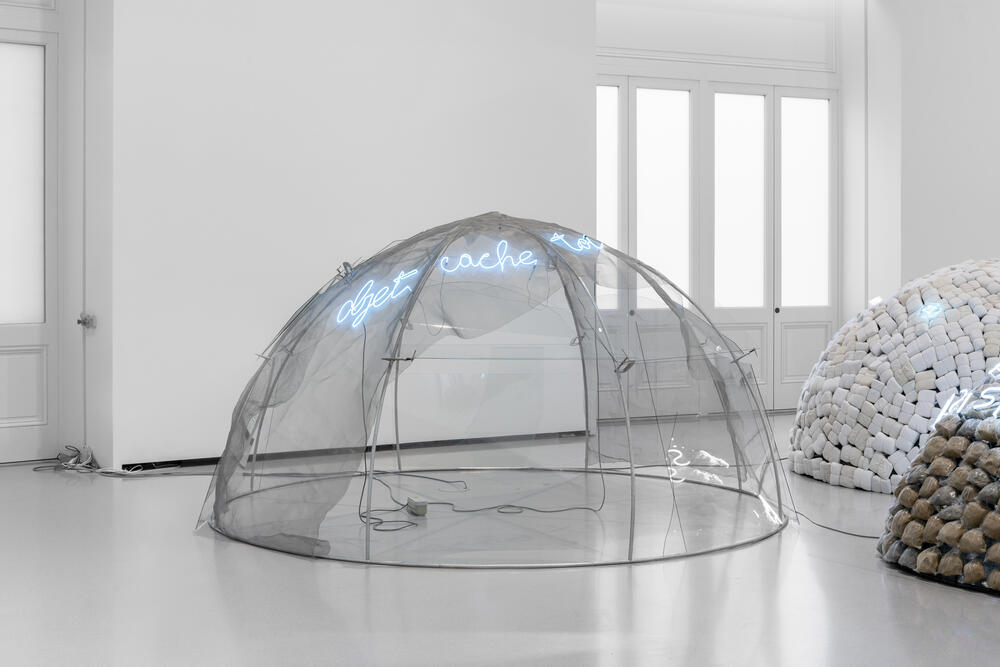Impermeabile
Raincoat, wood, wax, neon tubes
120 × 170 × 20 cm (47 1/4 × 66 15/16 × 7 7/8 in.)
Mario Merz, who studied medicine for a time, began painting after the war, during which he was imprisoned for activism. In 1965–66, in a radical departure from the picture plane, he produced volumetric works with neon lights running through them. This material—a structuring element in his work—is then combined with objects: a bottle, an umbrella, a raincoat. Mario Merz underlines the magic of the creative moment when materials meet—the ecstatic act of artistic production.
In 1968, Merz presented his first igloos, “the ultimate organic forms.” These permanent structures in his work allowed the abandonment of the plane and the implementation of an autonomous space covered with materials such as clay, earth, glass, and stone. From then on, he participated in the exhibitions of the Arte Povera group. He also exhibited a series of objects and situations mixing natural elements (hay, bundles of twigs, wax) and industrial elements: tubular structures, neon lights. In 1971, the idea of proliferation that he liked so much found its expression in the Fibonacci sequence of integers in which each term is the sum of the two preceding terms. The theme of proliferation also materializes in the motif of the table, a square or spiral geometric shape, linked to spatial installations composed of other materials. Around 1975, Merz returned to painting and composed brightly coloured pictures on stretcherless canvases, representing elements of nature—animals, plants, the human body—associated with elements already familiar to his practice: igloos, bundles of twigs, tables...
Impermeabile is presented for the first time by the Pinault Collection in the exhibition "Au-delà de la couleur" at the Couvent des Jacobins in Rennes in 2021.




